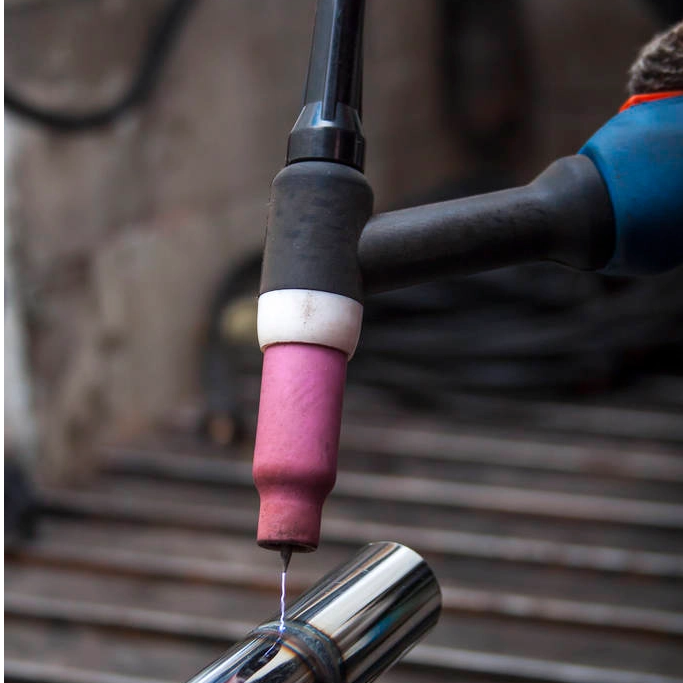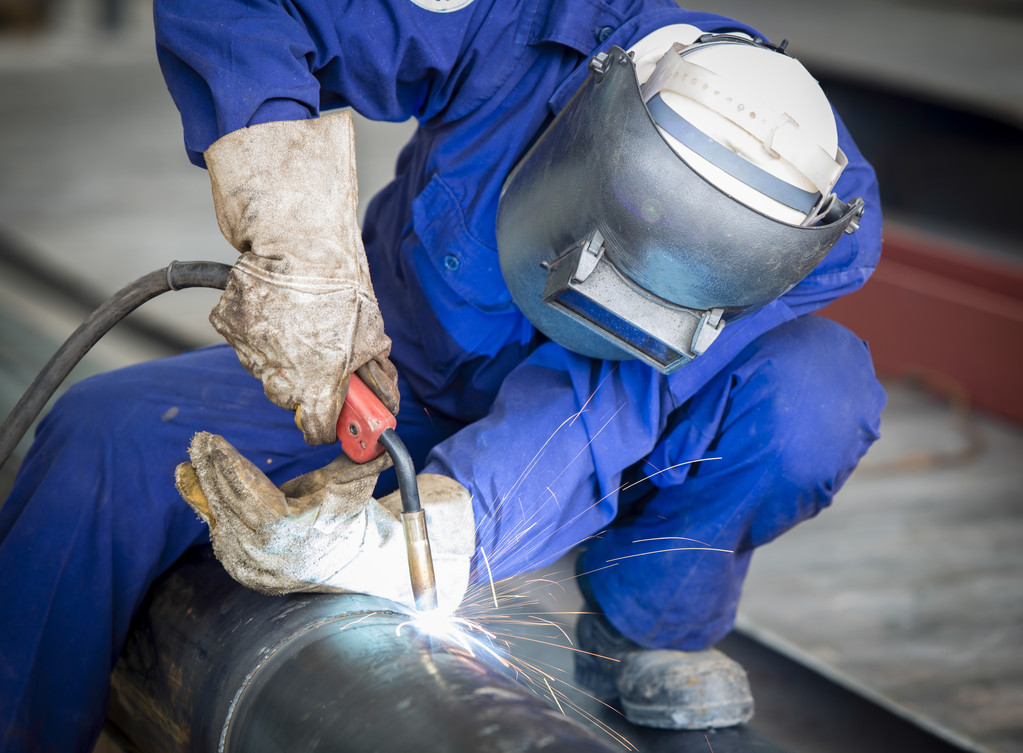Welding is not just a process; it's an intricate dance of heat, metal, and gas that when executed properly, results in a strong and reliable finished product. The temperature of a welding torch is a fundamental aspect of welding, as it directly influences the quality and strength of the weld. For professionals and hobbyists alike, the question "How hot is a welding torch?" is more than just a matter of curiosity: it's a critical factor in the success of their work. In this detailed guide, we will investigate the temperatures achieved by various welding torches, focusing on the "hottest welding torch" and how to master the art of temperature control for superior welding performance.
The Underlying Science of Welding Torch Temperatures
Welding torches are the heart of the welding process, generating the heat required to melt and fuse metals. The temperatures involved can be extraordinarily high, typically ranging from 3,000 to 20,000 degrees Fahrenheit (1,648 to 11,000 degrees Celsius), depending on the type of welding and the materials involved. This heat is produced by the combustion of a fuel gas, such as acetylene, propane, or hydrogen, mixed with oxygen, which then creates a focused and intense flame capable of melting most metals.
TIG Welding Torches: Precision and Control
TIG (Tungsten Inert Gas) welding torches, like the WP9 and WP17 models available from INWELT WELDING, are renowned for their precision and the control they offer the welder. These torches operate at temperatures that can carefully be adjusted to suit the task at hand, whether it's welding thin sheets of aluminum or joining stainless steel components. This precise temperature control is essential for delicate welding jobs where too much heat can warp or damage the workpiece.
The Versatility of the WP Series
The WP Series of TIG welding torches embodies versatility. With models such as the WP9 and WP17, welders can tackle a range of projects with different metal types and thicknesses. These torches provide a stable arc and consistent heat control, crucial for achieving clean and strong welds.

MIG Welding Torches: Power and Heat for Heavy-Duty Work
MIG (Metal Inert Gas) welding torches are designed for power and efficiency, making them ideal for welding thicker materials. Our MB Series and PANA Series torches are exemplary in their ability to sustain high temperatures, necessary for creating deep weld penetration in materials like steel and aluminum.
MB Series: The Workhorse of MIG Welding
The MB Series MIG welding torches, including the robust MB36 and MB501, exemplify the power needed for large-scale and industrial welding. The heat generated by these torches is intense and concentrated, allowing for quick and effective welding, saving time and increasing productivity in demanding environments.
Achieving the Hottest Flames: Oxy-Fuel Torches
The title for the "hottest welding torch" often goes to oxy-fuel torches. These torches mix a fuel gas with oxygen, not only to weld but also to cut through metal. The temperatures they reach - often exceeding 6,000 degrees Fahrenheit - are necessary for slicing through thick steel plates or tackling metals with high melting points.
The Role of Oxy-Fuel Torches in Cutting
Oxy-fuel torches are not limited to welding; their high-temperature capabilities make them ideal for cutting operations as well. These torches have been a staple in metalworking for decades, prized for their ability to cut cleanly and efficiently through thick materials.
Temperature Control: The Key to Effective Welding
Temperature control is a critical aspect of welding, as too much or too little heat can lead to poor quality welds. Welders must have a deep understanding of how to adjust their torches to the correct temperature for the specific material they are working with.
Adjusting for Different Materials
Different metals require different temperatures to weld effectively. For instance, aluminum has a lower melting point than steel and thus requires a lower temperature to weld without burning through the material.
Welding Aluminum: A Delicate Balance
Aluminum welding, in particular, demands a fine-tuned approach. Due to its high thermal conductivity and lower melting point compared to steel, aluminum can be quite challenging to weld. Welders must employ a torch that allows for a lower temperature range and more refined heat control. This is where TIG welding torches, with their adjustable settings, become crucial for producing high-quality aluminum welds.
The Importance of Torch Design
The design of the welding torch plays a significant role in temperature control. Features such as variable power settings and specialized nozzles can help welders fine-tune the flame's intensity and spread. High-quality torches are engineered to offer the operator the ability to make small adjustments, which can make the difference between a mediocre weld and an exceptional one.
Innovations in Torch Technology
As welding technology advances, so do the capabilities of welding torches. Manufacturers are constantly innovating, creating torches with more precise controls and better ergonomics, which not only improve the quality of the weld but also reduce fatigue for the welder.
Safety Concerns with High-Temperature Welding
Safety is paramount when dealing with the high temperatures of welding torches. Welders must be equipped with the proper safety gear, including welding helmets, gloves, and protective clothing, to shield against ultraviolet and infrared radiation, as well as sparks and hot metal.
Understanding the Risks
The intense heat of a welding torch not only poses a risk to the welder but also to the surrounding environment. Materials in the vicinity can catch fire or melt if exposed to the heat of a welding torch, making it essential to have a clear understanding of the workspace and to keep flammable materials at a distance.
Implementing Safety Protocols
Adhering to strict safety protocols is essential in any welding operation. This includes proper training, equipment maintenance, and adherence to local safety regulations. By following these guidelines, welders can minimize the risk of accidents and ensure a safe working environment.

The Future of Welding Torch Technology
The evolution of welding torch technology is ongoing, with new advancements aimed at improving efficiency, accuracy, and safety. The welding industry may soon see torches with integrated sensors and controls that provide real-time feedback to the welder, further enhancing the welding process.
Anticipating Advancements
In the future, we can anticipate welding torches that are lighter, more energy-efficient, and capable of even greater precision. Developments in materials science may also lead to new fuel gases or welding mediums that offer higher temperatures or more focused flames.
The Role of Automation
Automation is becoming increasingly prevalent in welding, with robotic systems taking on more complex tasks. These systems rely on advanced torches with precise temperature control to consistently produce high-quality welds, often in high-volume production environments.
Training for the Future
As welding technology becomes more advanced, the need for skilled welders who understand how to operate the latest equipment grows. Training programs will need to keep pace with these technological changes, ensuring that the next generation of welders is proficient in both traditional techniques and modern methods.
Conclusion
The temperature of a welding torch is a critical factor that influences the strength, appearance, and integrity of a weld. Whether it's a TIG torch's refined heat control for delicate work or the raw power of an oxy-fuel torch for cutting through thick steel, understanding and controlling the torch's temperature is key to successful welding. As technology advances, new torch designs and welding methods will continue to emerge, pushing the boundaries of what's possible in metal fabrication. Welders must stay informed and adapt to these changes to maintain the quality and safety of their work.
Welding is not just about joining metals; it's about understanding the science and art of manipulating heat. The welding torch, as a tool of the trade, is as much a part of the welder's skill set as the knowledge of the metals being joined. Mastery over the temperature of a welding torch can make the difference between a merely functional weld and a masterpiece of metallurgy.
Welding torch temperatures are a fundamental aspect that welders need to master to ensure a strong, reliable, and aesthetically pleasing weld. The complexity of welding necessitates a deep understanding of how temperature interacts with different metals and welding processes. As we delve deeper into the intricacies of welding torch temperature control, we uncover the delicate balance that welders must achieve between heat, material properties, and the intended function of the welded joint.
The Interaction Between Heat and Metal
Metals respond to heat in various ways, and each metal has its own unique properties that dictate the required welding approach. For instance, metals like titanium and stainless steel require a controlled environment to prevent contamination from the atmosphere; this is where the inert gases in TIG and MIG welding play a crucial role. Understanding the thermal conductivity and expansion coefficients of the metals being welded is also vital to avoid warping or creating internal stresses within the weld.
Heat Affected Zone (HAZ) Considerations
The Heat Affected Zone (HAZ) is the area surrounding the weld that experiences changes in its microstructure due to the high temperatures. Managing the HAZ is critical because it can impact the metal's properties, potentially leading to weakness or failure. Welders must control the torch's heat input to minimize the size and effect of the HAZ.
Advanced Techniques for Temperature Control
Welders use a variety of techniques to control the temperature of their welding torch and the workpiece. Preheating, pulse welding, and post-weld heat treatment are some of the methods employed to manage the temperature and its effects on the weld.
Preheating to Minimize Thermal Shock
Preheating the metal before welding can help reduce thermal shock, which occurs when the temperature difference between the welding arc and the base metal is too great. This technique is especially important when welding thicker materials or those with high carbon content, which are more susceptible to cracking.
Pulse Welding for Precision
Pulse welding is a technique that involves alternating between a high peak current and a low background current. This method allows for heat input to be controlled more precisely, reducing the heat input and minimizing distortion in the workpiece.
Post-Weld Heat Treatment for Stress Relief
After welding, post-weld heat treatment can be used to relieve residual stresses within the weld and HAZ. This process involves heating the entire workpiece, or a substantial area around the weld, to a specific temperature and then controlling the cooling rate to achieve the desired material properties.
Welding Torch Maintenance for Optimal Performance
Maintaining a welding torch is essential for consistent temperature control. Regular inspection and cleaning of the torch and its components, such as the nozzle and electrodes, ensure that the welding process is not compromised by equipment failure or inefficiency.
The Role of Consumables
The consumables used in welding, like the tungsten electrode in TIG welding or the wire in MIG welding, have a direct impact on the temperature and stability of the arc. Using the correct type and size of consumables is crucial for maintaining the desired temperature and arc characteristics.
Best Practices for Torch Care
Welders must follow best practices for the care and maintenance of their torches. This includes checking for leaks, ensuring all connections are secure, and replacing any worn or damaged parts promptly. Proper care extends the life of the torch and ensures that it performs at its best.
The Environmental Impact of Welding Temperatures
The high temperatures used in welding have implications for the environment, including energy consumption and emissions. As the world becomes more environmentally conscious, the welding industry is also looking for ways to reduce its carbon footprint.
Sustainable Welding Practices
Sustainable welding practices involve optimizing welding processes to use less energy and produce fewer emissions without compromising weld quality. This can include using advanced welding machines that are more energy-efficient and adopting welding techniques that require less heat input.
The Push for Greener Technologies
The push for greener technologies in welding is leading to innovations such as electric welding torches that use less energy or alternative fuel gases that produce fewer emissions. These advancements aim to make welding a more sustainable part of manufacturing and construction.
Training and Certification for Welders
As welding technology evolves, so does the need for welders to continually update their skills. Training and certification programs help welders stay current with the latest techniques and technologies, ensuring that they can meet the demands of modern welding applications.
The Importance of Continuous Education
Continuous education is vital in the welding industry. It enables welders to learn about new materials, processes, and safety standards, which are imperative for their personal development and the advancement of the industry.
Certification Standards
Certification standards set by organizations like the American Welding Society (AWS) are benchmarks for the industry. They provide guidelines for training and ensure that welders meet the qualifications required to perform high-quality work in various applications.
Conclusion
The temperature of a welding torch is more than just a number—it's a critical variable that can mean the difference between asuccessful project and a compromised one. Welders must navigate the complexities of temperature control to achieve the desired results while also considering the material properties, welding process, and final application of the welded assembly.
Mastery Over Metals and Methods
Welders who master the relationship between temperature and different metals can create strong, durable, and safe welds in a variety of applications. The skill lies in understanding not only how to apply the heat but also when to modulate it and how to cool the metal afterward.
The Art of Heat Application
The art and science of welding come together in the hands of a skilled welder. Through experience and training, welders learn to control the torch with precision, guiding the heat to create seamless joints that meet both aesthetic and structural standards.
Embracing Technological Change
The welding industry continues to evolve with new technologies that offer greater control, efficiency, and safety. Welders must be open to adopting these technologies, which can enhance their capabilities and open up new opportunities in advanced manufacturing and construction.
The Future Is Bright for Skilled Welders
Skilled welders with a deep understanding of temperature control will always be in high demand. As industries push for more innovative and complex structures, the welder's ability to adapt and excel will be a deciding factor in the success of these endeavors.
A Commitment to Excellence
In conclusion, the temperature of a welding torch is a foundational element of the welding process, demanding respect, understanding, and continuous learning from the welder. With a commitment to excellence and a dedication to their craft, welders can look forward to a future where their skills are not only necessary but celebrated as a vital part of building the world around us.
The journey of a welder is one of constant learning and adaptation. The torch is a tool that, when wielded with expertise, can transform raw materials into works of strength and beauty. As we look to the future, the role of the welder is set to become even more significant, guiding the way for innovative designs and sustainable practices in an ever-changing industry.
English
简体中文
العربية
Français
Русский
Español
Português
Deutsch
italiano
日本語
한국어
Nederlands
Tiếng Việt
ไทย
Polski
Türkçe
ភាសាខ្មែរ
Bahasa Melayu
Filipino
Bahasa Indonesia
magyar
Română
Čeština
Монгол
қазақ
Српски
हिन्दी
فارسی
Slovenčina
Slovenščina
Norsk
Svenska
українська
Ελληνικά
Suomi
Latine
Dansk
বাংলা
Hrvatski
Afrikaans
Gaeilge
Eesti keel
नेपाली
Oʻzbekcha
latviešu
Azərbaycan dili
Беларуская мова
Bosanski
Български
ქართული
Lietuvių



















